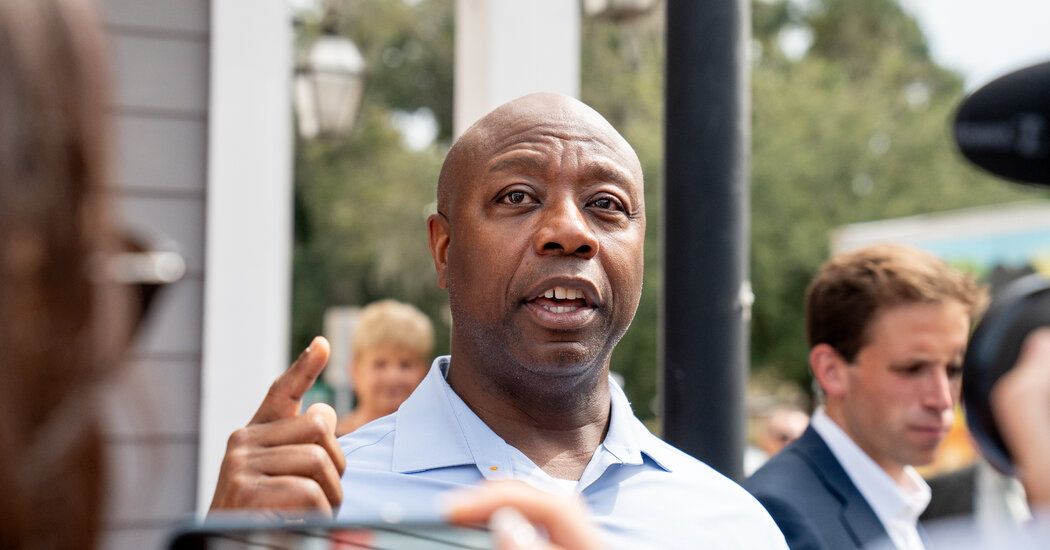Ohio Votes to Establish Right to Abortion
Ohio voters approved a ballot measure enshrining a right to abortion in the State Constitution on Tuesday, according to The Associated Press, continuing a series of wins for abortion-rights groups who have appealed directly to the public as they try to recover from the United States Supreme Court’s reversal of Roe v. Wade.
Issue 1, as the ballot measure is known, had become the country’s most-watched race in the off-year elections. Both parties are looking to gauge whether voter anger over the loss of the federal right to abortion might help Democrats in next year’s presidential and congressional races. National groups on both sides of the debate poured money into Ohio in recent weeks.
The victory in a conservative state is likely to help lift the hopes of abortion-rights groups pushing similar measures next year in red and purple states, including Arizona, South Dakota, Missouri and Florida.
“It’s not up to the government to decide what we do with our bodies,” said Alissa Carver, 26, who lives outside Cincinnati and describes herself as an independent voter. “It’s for us to decide, it’s our experience.”
Wendy Pace, a 52-year-old independent, said she didn’t normally vote in off-year elections, but came out because she wanted to vote “yes” on Issue 1. “I have a teenage daughter and I don’t like having my rights taken away from me,” she said. “I fear that this is just the beginning of rights being taken away, and I do fear for my daughter and what her rights would be going forward.”
While abortion-rights groups prevailed in six out of six state ballot measures last year, Ohio was considered the toughest.
Republicans who control the state government had leaned on the power of their offices to try to thwart the measure, calling a special election in August to try to make ballot amendments harder to pass and purging voter rolls in recent weeks. They rewrote the language that appeared on the ballot, adopting the terms of anti-abortion groups to play to voter unease that the measure would lead to more abortions late in pregnancy. Such abortions are rare but extremely unpopular among Americans.
Abortion-rights groups appealed to Americans’ innate dislike of government involvement in health care, urging voters to keep politicians out of decisions about their health and families.
That argument resonated with many “yes” voters, across party lines.
“I am a Christian, but I am thinking long-term: It’s between a person and their maker,” said Carolyn Lloyd, 54. While she typically votes Republican, she said, “I would hate to see women suffer because of maybe a weak moment or malfunction with birth control and have to bear that burden.”
In Shaker Heights, Maxine Williams, 82 and a Democrat, said she was “old enough to remember when women had to go underground and do these back alley abortions.”
“Aren’t the Republicans against government interference? Yet, they’re doing that,” she said. “It boggles my mind they’re acting this way.”
Greg Eubanks, a 58-year-old voter who described himself as “conservative, but pro-choice,” said he had been convinced to vote “no” by opponents who argued that the amendment would eliminate parental notification laws on abortion and allow gender-transition care “without any kind of parental guidance.” Constitutional scholars said the amendment would do neither, but Mr. Eubanks said “those things concern me.”
“Issue 1 is so far that I voted no against it,” he said, “but I am going to lobby our Republican leadership to soften the language of the current abortion restrictions, which are ridiculous.”
The measure had been initiated largely by doctors, and it was helped by public outrage over the consequences of an abortion ban that the legislature passed in 2019.
That ban, which prohibited abortion after roughly six weeks of pregnancy with almost no exceptions, was on hold pending a ruling from the State Supreme Court, but was in effect for 82 days after Roe’s reversal. In that time, the state drew national headlines when a 10-year-old rape victim had to travel to Indiana for an abortion because Ohio doctors said they could not provide one.
“I think mothers’ lives are important. I think babies’ lives are important. But if a little girl is raped at 10 years old, I don’t think she should have to carry the baby if she is pregnant,” said Delena Reed, 65, a registered Republican who considers herself “pro-life” for religious reasons.
The results of Issue 1 will almost certainly require the court to invalidate the six-week ban.
The measure amends the State Constitution to say that individuals have the right to make their own reproductive decisions, including on abortion. The state may prohibit abortion when the fetus is viable outside the uterus — around 23 weeks — except when a pregnant woman’s doctor determines it is necessary to protect her health or life.
The success of Issue 1 shows how much the debate and dynamic around abortion have changed since the Supreme Court overturned Roe last year. Immediately after the decision in June 2022, abortion-rights groups seemed to have little way forward, and focused mostly on filing lawsuits to try to stop abortion bans that took effect in more than a dozen states.
Anti-abortion groups, on the wings of their victory at the court, pushed ballot measures saying there was no right to abortion in state constitutions in Kentucky and Kansas. But after those measures failed, and ballot measures to establish abortion rights succeeded, anti-abortion groups have been on the defensive.
Still, the power of ballot measures to restore abortion rights and to help Democrats may be limited. There are roughly 10 states that allow citizen-sponsored ballot measures and also restrict abortion. And support for abortion-rights measures in other states has not always translated into support for Democratic candidates.
Anti-abortion groups are already looking ahead to try to block future ballot initiatives. In states like Missouri and Arizona, they have begun “decline to sign” campaigns, hoping to convince voters not to sign the petitions required to put the measures on the ballot.
Rachel Richardson and Daniel McGraw contributed to this story.


